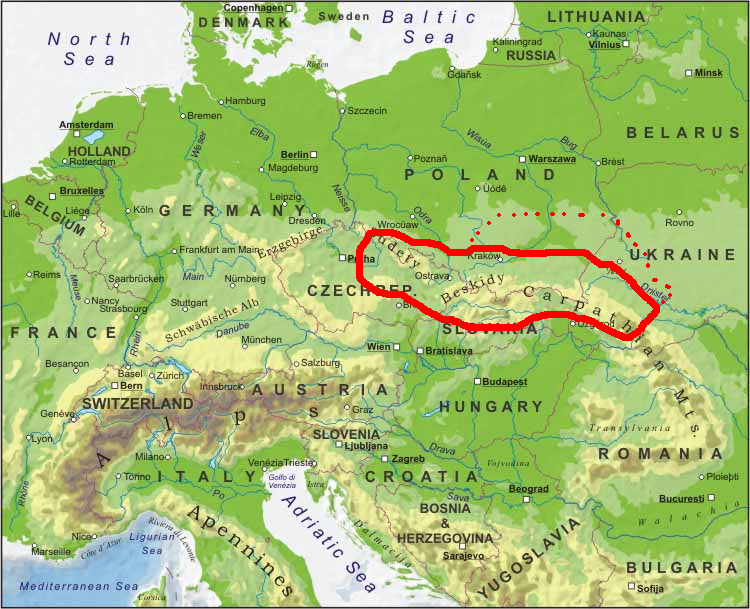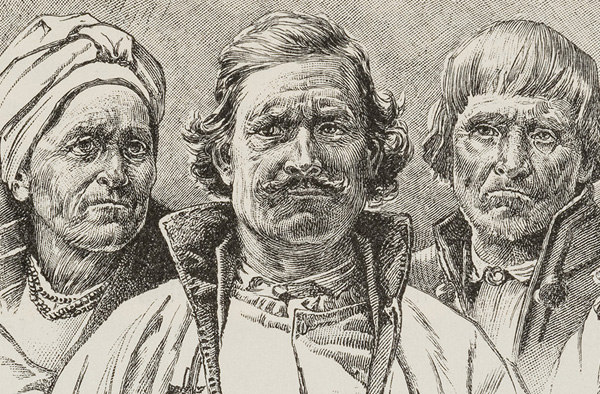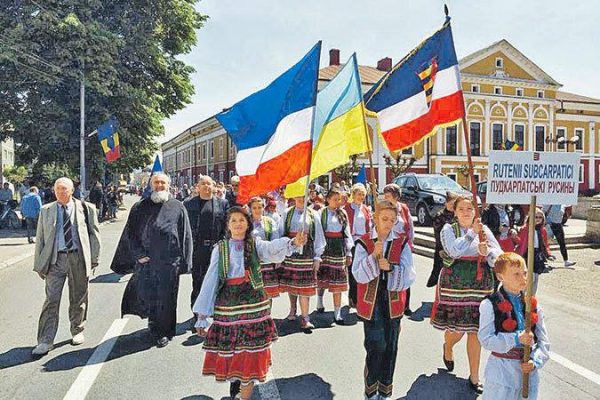Whilst this article may contain a lot of words and jargon that sound like they came straight out of Game of Thrones, bear with us as we explain the fascinating and little known story behind the territory of Ruthenia!
Where is Ruthenia?

The nationalities we would today refer to as Ukrainians, Belarusians, Slovaks or Polish naturally went under a different name back in the Medieval era. East Slavic people and their languages were referred to as Rusyn. Similarly, the medieval term of Ruthenia was used to refer to said Slavic people who lived in the former Kievan Rus, but in the medieval era became the grand duchy of Lithuania and later the Polish-Lithuanian Commonwealth. This territory stretched from modern day Poland to the edges of Romania, incorporating the Carpathian mountains, Ukraine and Slovakia.
Back then, as well as nationality, the term Rusyn also referred to the official Belarusian based language of the era. Today the name Rusyn refers to the spoken language and variants of a literary language codified in the 20th century for Carpatho-Rusyns living in the Transcarpathian region of Ukraine, Poland, Slovakia, Hungary, and the autonomous province of Vojvodina in Serbia.
History of Ruthenia

Towards the end of the 18th Century, Ruthenia was split between the Russian Empire (present-day Belarus and much of Ukraine) and Austria-Hungarian. Russia gained control of modern Belarus and the majority of Ukraine whilst the Austro-Hungarians gained control of regions in Ukraine, Poland, and Slovakia. In the 19th Century, Russia began to stop using the word Ruthenia and called the region White Russia (which translates to Belarus in Russian language). The Austro-Hungarians however still continued to use the term to refer to the Slavic people living in the Austro-Hungarian provinces of Galicia, Bukovina and some areas of Hungary. The term even reached America and Canada as mass immigration to North America prior to 1914 led to American and Canadian censuses using the term to describe the new arrivals.
After WW1 and the Russian Revolution, Rusyn lands were split between the USSR, Romania, Czechoslovakia and Romania. It was only in Czechoslovakia that Rusyns were still referred to as such as the term was designated to the Carpatho-Rusyns who lived in the far east of Czechoslovakia. Interestingly, during the Paris Peace Conference, Subcarpathian Rus was given autonomous status within the international treaties and the Czechoslovakian constitution. Rusyn even became an official language of the province alongside the mother language of Czech. Unfortunately, the autonomy of the province was short lived as the rise of Nazi Germany and the annexation of Czechoslovakia forced the country to cede to the Nazis and their ally of Hungary.
After the apocalyptic retreat of the Nazis through the region in 1944, the Hungarians were ousted from the region and replaced by Soviet rule. Under orders of Stalin, Ruthenia became the Transcarpathian oblast of the Ukrainian SSR. The names of Rusyn and Carpatho-Rusyn were banned across all territories of the USSR, and the language was declared Ukrainian.
During the Soviet Rule in central and eastern Europe between 1945 to 1989, the term Rusyn only survived through the diaspora in North America and Yugoslavia where Rusyns, affectionately called Rusnaks in Yugoslavia, were declared an official Yugoslav nationality
Post-Communist Revival of Ruthenia

When communism in central and eastern Europe collapsed in 1989, Carpatho-Rusyn activists attempted a revival of their language and culture. Since then many countries with Rusyn populations have given Rusyns minority status, language status and state support. It’s estimated that around a million Rusyns live in the ancestral homeland of Ruthenia today.
To explore the heritage of Ruthenia, check out our Soviet tours and contact us to arrange independent tours through the Rusyn territories of Slovakia, Poland, Hungary, Ukraine, Romania, Serbia, Croatia, and the Czech Republic!





